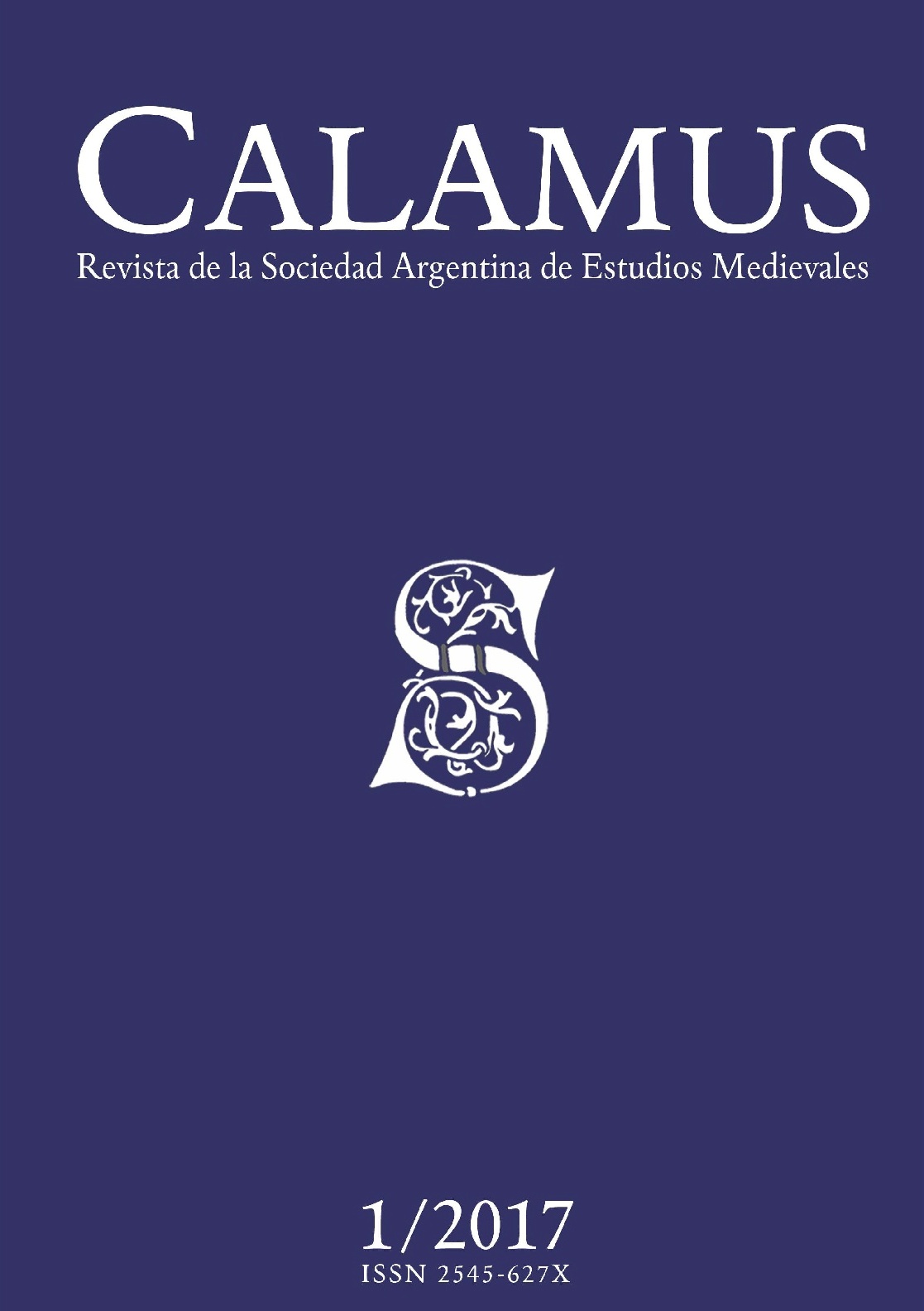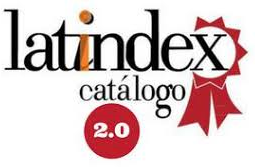Como si de esta gente yo trazase mi origen: hipótesis sobre la vida de Jordanes
Resumen
El objetivo de este artículo es discutir la persona literaria de Jordanes: ¿quién fue él?, ¿cuál fue su posición política y religiosa? y ¿cómo se identificaba a sí mismo? Con esta información, frecuentemente pasada por alto por la historiografía de la Antigüedad Tardía y de la Alta Edad Media, intento aquí colocar su reconocida obra, la Getica, en el centro de una nueva y actualizada exploración. Al incrementar la cercanía que se tiene con el autor, se podrá revisar la Getica e identificar metas e intenciones distintas. Dejando a un lado la supuesta identidad 'gótica', y asumiendo también que su trasfondo étnico es una construcción mucho más fluida y mixta, la Getica deja de ser tan solo una historia de los godos para presentarse así como un análisis del desarrollo histórico de las regiones orientales de Europa que explica cómo los diferentes pueblos, desde los godos hasta los hunos, intentaron configurar el destino de toda la zona.
Citas
Amory, P. (2003), People and Identity in Ostrogothic Italy, 489 – 554. Cambridge: Cambridge University Press.
Bodelón, S. (2005), “Jordanes y la problemática de la Gética”, Memorias de Historia Antigua, XXI-XXII, pp. 49-72.
Bradley, D. R. (1993), “‘In Altum Laxare Vela Compulsus’: The ‘Getica’ of Jordanes’”, Hermes, 121, pp. 221-36.
Bradley, D. R. (1995), “Manuscript Evidence for the Text of the ‘Getica’ of Jordanes (I)”, Hermes, 123, pp. 346–62.
Burns, T. S. (1984), A History of the Ostrogoths. Bloomington: Indiana University Press.
Cassiodorus (1990), Psalms 1 – 50, trans. by P. G. Walsh. New York: Paulist Press.
Christensen, A. S. (2002), Cassiodorus, Jordanes and the History of the Goths: Studies in a Migration Myth. Copenhagen: Museum Tusculanum Press.
Closs, K.A. (1861), Iordanis De Getarum Sive Gothorum Origine et Rebus Gestis Stuttgart: Eduardi Fishhaber.
Dewing, H. B. (1962), Procopius: History of the Wars, The Loeb Classical Library, vol. V. Massachussets: Harvard University Press.
Galdi, G. (2008), “Ex Dictis Maiorum Floscula Carpens Breviter Referam: L’apporto Linguistico Dei Modelli Nell’opera Di Jordanes”, Journal of Latin Linguistics, 10, pp. 109-32.
Galdi, G. (2010), “Late Sparsa Collegimus: The Influence of Sources on the Language of Jordanes”, Colloquial and Literary Latin. Cambridge: Cambridge University Press, pp. 357-75.
Gillett, A. (2000), “Jordanes and Ablabius”, Latomus, 254, pp. 479-500.
Gillett, A. (2009), “The Mirror of Jordanes: Concepts of the Barbarian, Then and Now”, in Rousseau, P. (ed.), A Companion to Late Antiquity, Oxford: Wiley-Blackwell, pp. 392-408.
Goffart, W. A. (1988), The Narrators of Barbarian History (A.D. 550-800): Jordanes, Gregory of Tours, Bede, and Paul the Deacon. Princeton: Princeton University Press.
Goffart, W. A. (2010), Barbarian Tides: The Migration Age and the Later Roman Empire. Pennsylvania: University of Pennsylvania Press.
Heather, P. J. (2014), “The Huns and Barbarian Europe”, in Maas, M. (ed.), The Cambridge Companion to the Age of Attila, New York: Cambridge University Press, pp. 209-29.
Iordanes (2012), Die Gotengeschichte, trans. by L. Möller. Wiesbaden: Marixverlag.
Jordanes (1915), The Gothic History of Jordanes: In English with an Introduction and a Commentary, trans. by C. C. Mierow. Princeton: Princeton University Press.
Jordanès (1995), Histoire des Goths, trans. by O. Devillers. Paris: Les Belles Lettres.
Jordanes (2001), Origen y gestas de los godos, trans. by J. M. Sánchez Martín, Letras Universales, 318. Madrid: Cátedra.
Jordanes (2003), De Summa Temporum Vel Origine Actibusque Gentis Romanorum, trans. by B. T.Regan. Available at: http://www.harbornet.com/folks/theedrich/Goths/Romana.htm
Liebeschuetz, W. (2011), “Why Did Jordanes Write the Getica?”, Antiquité Tardive, 19, pp. 321-40.
Maenchen-Helfen, O. (1973), The World of the Huns: Studies in Their History and Culture. Berkeley: University of California Press.
Merrills, A. H (2005), History and Geography in Late Antiquity. Cambridge and New York: Cambridge University Press.
Momigliano, A. (1984), Secondo Contributo Alla Storia Degli Studi Classici. Rome: Edizioni di Storia e Letteratura.
Mommsen, T. (1882), Iordanis Romana et Getica, MGH, AA t. 5. Berlin: Weidmann.
O’Donnell, J. J. (1982), “The Aims of Jordanes”, Historia: Zeitschrift Für Alte Geschichte, 31, pp. 223-40.
Pohl, W. (2005), Die Völkerwanderung: Eroberung und Integration, 2nd ed. Stuttgart, Berlin and Cologne: Kohlhammer.
Rix, R. (2015), The Barbarian North in Medieval Imagination: Ethnicity, Legend, and Literature. New York: Routledge.
Schönfeld, M. (1911), Wörterbuch Der Altgermanischen Personen- Und Völkernamen Nach Der Überlieferung Des Klassischen Altertums. Heidelberg: Universitätsverlag Winte.
Steinacher, R. (2010), “The Herules: Fragments of a History”, in Curta, F. (ed.), Neglected Barbarians, Turnhout: Brepols Publishers, pp. 319-60.
Viscido, L. (2011), Ricerche Sulle Fondazioni Monastiche Di Cassiodoro E Sulle Sue Institutiones. Squillace: La Rondine.
Weißensteiner, J. (1994), “Cassiodor / Jordanes Als Geschichtsschreiber”, in Scharer, A. and Scheibelreiter, G. (eds.), Historiographie Im Frühen Mittelalter, Viena and Munich: Oldenbourg, pp. 308-25.
Wolfram, H. (1990), Die Goten: von den Anfängen bis zur Mitte des sechsten Jahrhunderts: Entwurf einer historischen Ethnographie. Munich: C.H.Beck.
Woolf, H. B. (1939), The Old Germanic Principles of Name-Giving. Baltimore: Johns Hopkins Press.

Esta obra está bajo licencia internacional Creative Commons Reconocimiento-NoComercial-CompartirIgual 4.0.
Los autores que publiquen en esta revista aceptan las siguientes condiciones: 1) los autores conservan los derechos de autor y ceden a la revista el derecho de la primera publicación, con el trabajo registrado con Licencia Creative Commons Atribución - No Comercial - Compartir Igual 4.0 Internacional, que permite a terceros utilizar lo publicado siempre que mencionen la autoría del trabajo y la primera publicación en esta revista; 2) los autores pueden realizar otros acuerdos contractuales independientes y adicionales para la distribución no exclusiva de la versión del artículo publicado en esta revista (p. ej., incluirlo en un repositorio institucional o publicarlo en un libro) siempre que indiquen claramente que el trabajo se publicó por primera vez en esta revista; 3) se permite y recomienda a los autores a publicar su trabajo en Internet (por ejemplo en páginas institucionales o personales).










